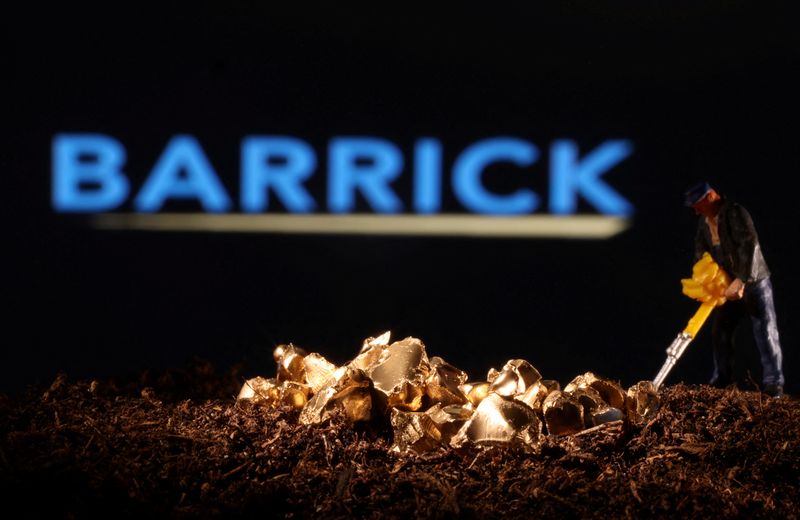By Arunima Kumar and Helen Reid
(Reuters) - Barrick Gold (NYSE:GOLD) Corp flagged on Monday that it might overshoot its gold production cost forecast this year, though it stopped short of hiking its cost guidance, with CEO Mark Bristow saying the path of inflation was uncertain.
Barrick beat analysts' expectations with a nearly 19% rise in second-quarter profit thanks to higher copper output even as inflation drove production costs up for the world's second-biggest gold miner. Its shares rose 2% at the open in Toronto.
The company now expects to be "either at the top end or slightly above" its all-in sustaining cost guidance range for 2022 of $1,040 to $1,120 per ounce of gold, given energy prices have risen due to the war in Ukraine, it said.
"There's no way that anyone can categorically assess the costs at the moment, because you don't know where it's going to go," Bristow said. "The world is not in balance at the moment."
Mining companies have battled inflation this year as prices for diesel, explosives, and cyanide surged. Barrick's rival Newmont Corp hiked its annual cost forecast two weeks ago, sending its shares down 12%.
Barrick's cost of production for the first half was $1,188 per ounce of gold, meaning it will have to bring costs down in the second half in order to meet its forecast, something Bristow said he expects.
"We can't go along and change the fuel price, but we are forecasting an increase in production, so that drives the cost down," he said.
Barrick is on track to meet annual copper and gold production guidance, it said, announcing production of 120 million pounds of copper in the second quarter, up 25% from the same period last year, while gold output rose marginally to 1.043 million ounces from 1.041 million ounces.
Net earnings stood at $488 million, or 27 cents per share, for the quarter ended June 30, compared with $411 million, or 23 cents per share, a year earlier. Earnings and revenue for the quarter beat analysts' estimates, according to Refinitiv data.

Barrick maintained its quarterly dividend of $0.20 per share. "On an annualized basis, this implies a ~5.1% yield, currently the highest in our coverage universe," Credit Suisse analysts said.
Barrick's project capital expenditure jumped by 23% in the first half of this year, mainly due to spending on the expansion of the Pueblo Viejo mine in Dominican Republic, while free cash flow fell by 24% from the year-ago period.